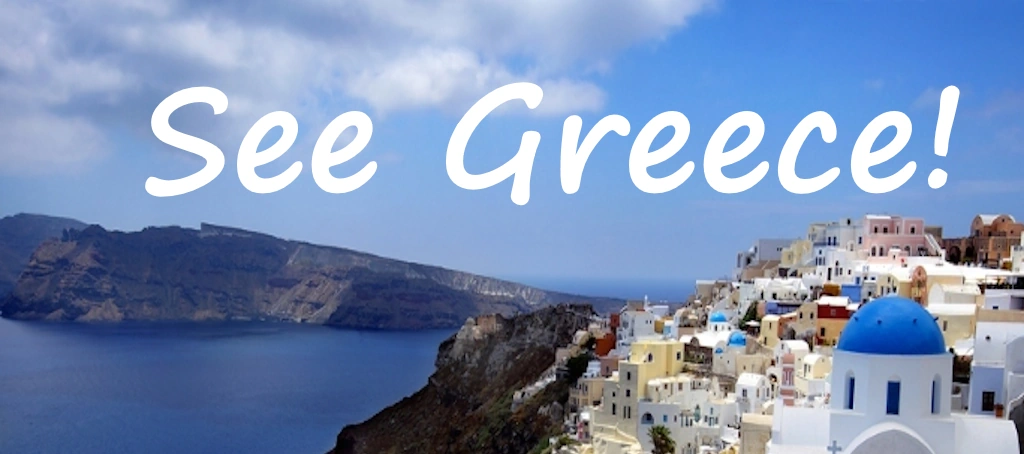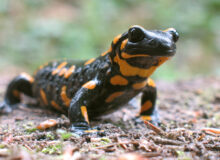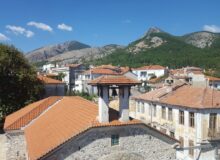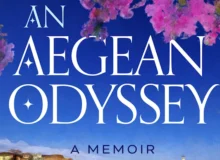Evros Delta
The Evros Delta National Park is one of the most important wetlands in the whole of Europe, and a magnet for birdwatchers.

The Evros Delta is a vital wetland of international importance, rich in history and teeming with wildlife. Located at the northeastern edge of the country, it serves as a natural border with Turkey and a sanctuary for hundreds of species.
Where is the Evros Delta?
The Evros Delta is a 20-minute drive east of Alexandroupoli in Thrace.

Geography of the Evros Delta
The Evros Delta lies where the Evros River (also known as Maritsa in Bulgaria) empties into the Thracian Sea, forming a vast wetland of approximately 188 square kilometres (73 square miles). The river itself originates in the Rila Mountains of Bulgaria, flowing for over 528 kilometers (328 miles) through Bulgaria, Greece, and Turkey. Its sediment-rich waters have shaped the delta over centuries, creating a mosaic of freshwater lakes, brackish lagoons, sandy islets, reedbeds, and riverine forests
This liminal zone—between land and sea, between nations—is not only a geographical marvel but also a cultural and ecological crossroads. The delta’s Mediterranean climate is tempered by continental influences, resulting in harsh winters and frequent frosts, which shape the seasonal rhythms of life here.
Historical Significance

Historically, the Evros River was a crucial commercial artery. In the 19th century, it transported agricultural goods from Thrace, linking inland communities to coastal trade routes. The delta’s strategic location has long made it a military and geopolitical hotspot, especially given its proximity to the Greek-Turkish border. Today, the area is patrolled by border guards and dotted with observation towers, blending human presence with the natural landscape.
Despite its militarized context, the delta has remained a symbol of coexistence—between nations, between people and nature. Fishermen, biologists, and conservationists work alongside police and border patrols, all sharing the space in a delicate balance.
Ecological Importance
The Evros Delta is recognized as a Ramsar Wetland of International Importance since 1974 and is part of the Natura 2000 network, underscoring its ecological value. It is one of the most biodiverse regions in Europe, especially for birds, with over 320 species recorded, representing more than 70% of Greece’s avian fauna.
The delta’s varied habitats—reedy ditches, tamarisk forests, swamps, and lagoons—support a rich tapestry of life. Its position along a major migratory flyway makes it a critical stopover for birds traveling between Europe, Asia, and Africa.
Evros Delta Wildlife Highlights

Here are some of the standout species and wildlife experiences in the Evros Delta:
- Slender-billed Curlew: Once common, now critically endangered. The delta has been one of its last known European refuges.
- Greater Sand Plover and Caspian Plover: Rare sightings that thrill birdwatchers.
- White-tailed Eagle and Sociable Lapwing: Species of international conservation concern.
- Glossy Ibis, Purple Heron, and Black-winged Stilt: Commonly seen waders and waterbirds.
- Dalmatian Pelican and Pygmy Cormorant: Large, charismatic species that nest and feed in the delta.
Beyond birds, the delta is home to reptiles, amphibians, and fish, including European pond turtles, grass snakes, and carp. Mammals such as otters, foxes, and wild boar also roam the area, though they are more elusive.
Visiting and Birdwatching

The northwestern section of the delta is open to the public and offers excellent birdwatching opportunities. The southeastern part, however, requires special permits for non-Greeks due to its sensitive location near the border.
Visitors can explore the delta via wooden piers, observation towers, and traditional “plaves” boats, which glide through the canals and marshes. The muted tones of the landscape—dun-coloured grasses, silt-laden waters, and pale skies—create a serene, almost mystical atmosphere
Conservation Challenges
Despite its protected status, the Evros Delta faces several threats:
- Freshwater management issues: Altered river flows and irrigation demands disrupt natural cycles.
- Overgrazing and overfishing: Local practices sometimes exceed sustainable limits.
- Illegal hunting: Though regulated, poaching remains a concern.
- Drainage and land conversion: Agricultural expansion threatens wetland integrity.
Conservation groups, including the Hellenic Ornithological Society, are actively involved in monitoring and protecting the delta’s biodiversity.
A Living Landscape
The Evros Delta is more than a nature reserve—it’s a living landscape where humans and wildlife share space. It embodies the tension and harmony between border politics and ecological preservation, between tradition and modern conservation.
Whether you’re a birdwatcher, a nature lover, or a curious traveler, the delta offers a rare glimpse into one of Europe’s last wild frontiers. Its beauty lies not just in its species count, but in its ability to inspire awe, reflection, and a deeper appreciation for the fragile balance of life.
Accommodation near the Evros Delta
There is a town on the edge of the delta, Loutra Traianopolis, where there is a choice of simple accommodation if you wish to spend a little time exploring the area. From here you can do it on foot, as there are numerous paths that go into the delta, but take care with directions as it is easy to get lost.

The Most Dangerous Viper in Europe
There are some poisonous snakes in the region, and while you are unlikely to be bitten as snakes usually make themselves scarce as they hear approaching footsteps, do be cautious.
More Information
See the official website for the Evros Delta.





















